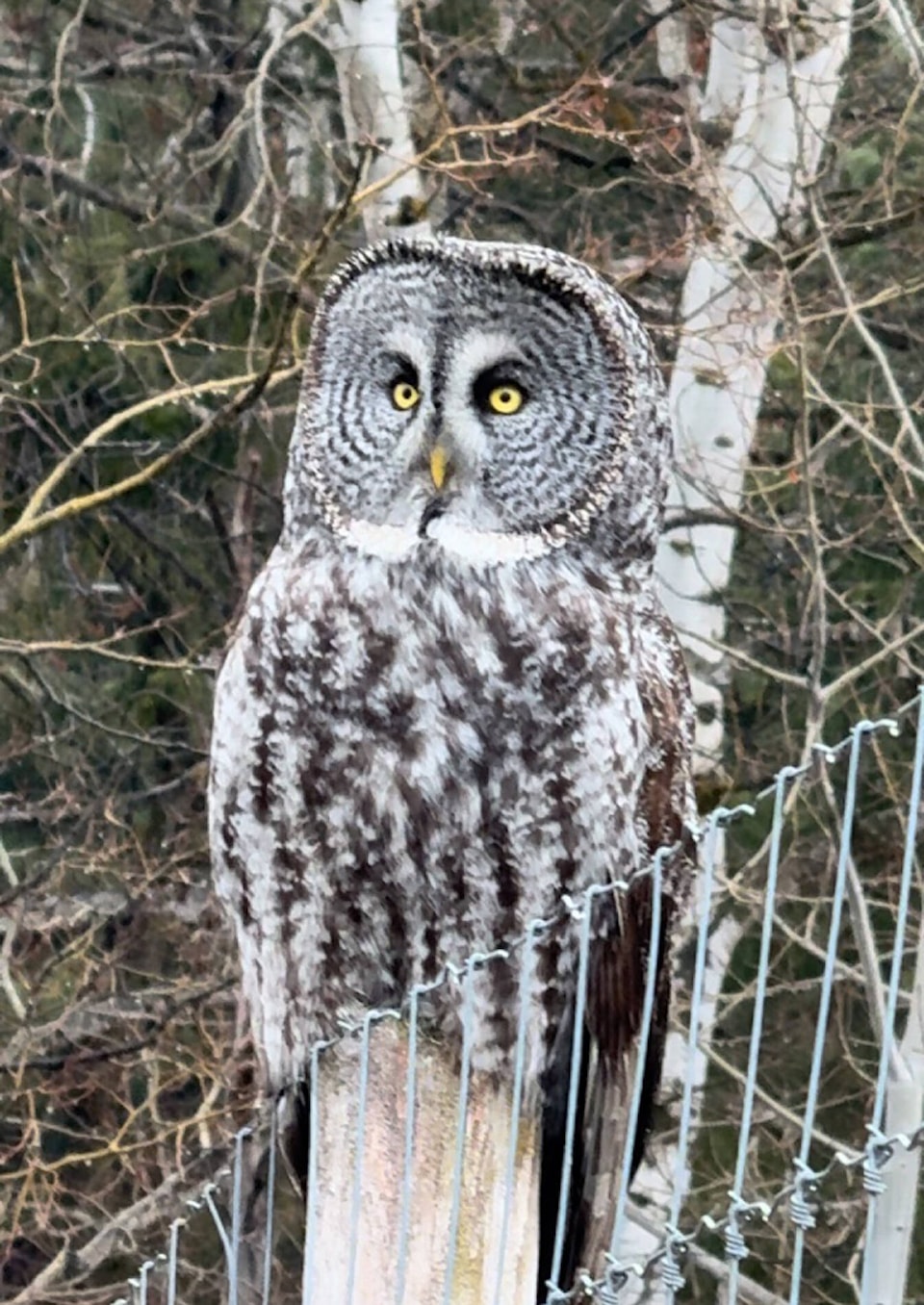By Ed McMackin
Not only is the Great Gray Owl the greatest of all our gray owls but it is the greatest — largest — of all the owls in North America.
Great horned owls, which reach 20 inches in length and may appear totally gray on overcast days, have tufts of feathers on the head, appearing like horns, while great gray owls have a rounded head. Spotted owls and snowy owls all have a rounded head, like the Great Gray, but reach only 16 inches in length. Of course snowy owls have mostly white plumage. Barred owls have a rounded head and may appear gray at times, but reach a length of about 13 inches.
Now, back to the Great Gray Owl.
I also read that the Great Gray Owl is the largest owl in the world by length, while the Blakiston Fish Owl is the largest owl. It is a sub-group of the fish-owls. In my opinion, of our owls, the Blakiston Fish Owl is not a “straight” owl but is a “fish-owl.” So perhaps the Great Gray Owl is the world’s largest owl.
The greatness of great gray owls is not easily assessed as there is not usually much around by which to measure them. Sometimes an observer may realize that what they are seeing is larger than any owl they have seen before.
A couple of days ago when first coming to the Creston Valley and getting settled in the “bush,” I repeatedly drove by and owl perched on top of a bluebird box by the lane. Without really paying much attention to it I assumed it was a barred owl. Then one day I realized that owl was more than twice the height of the bluebird box on which it was perched, and concluded I had been getting a daily show of a great gray owl. With fresh white snow all around, perched on a fence post, with no trees close by, its large size wasn’t evident. It was in this snowy, white field that I was given a daily show.
Into the deep snow it would plunge from a fence post or from a slow, gliding flight over the snow, either to have its “daily plunge” or to grasp its daily-meal or its twice-daily meal. I didn’t stick around to count the dives. I did read that the snow-plunge may help to “dampen” the flea population.
Talk about getting back to natural remedies — try the “snow-plunge.” (Me try? No thanks!) Say, if you wait long enough, you might be able to go to a pharmacy and pick up a “snow plunge.”.And, it won’t be free!
Great Gray Owls are not frequently seen in the Kootenay Lake - Creston region, and seen even less farther south, being rare in southern mountain regions. They nest in forest areas of the northern Rocky Mountains, including in Kootenay National Park. An observer might hear one before it is seen. Their call is a low booming sound, like a very low-pitched, slow, “whoo, whoo, whooo.” And they may be heard in late winter, on overcast late afternoons and early evenings from nearby forest-edges.
